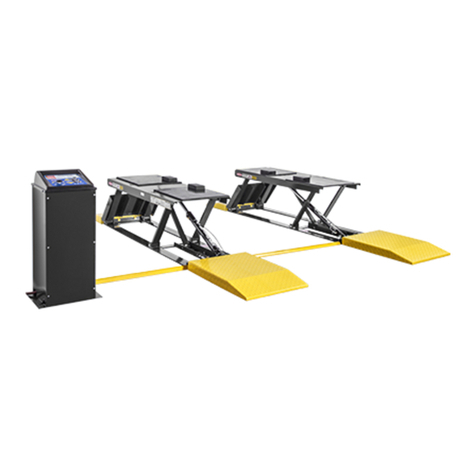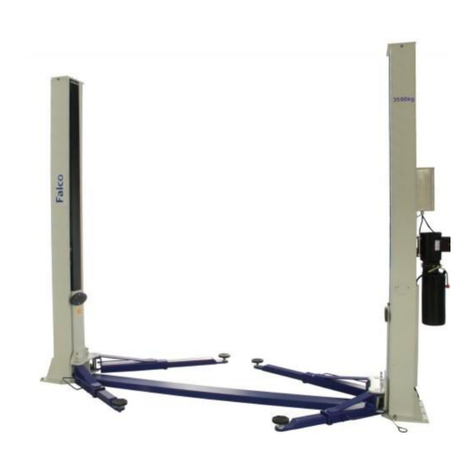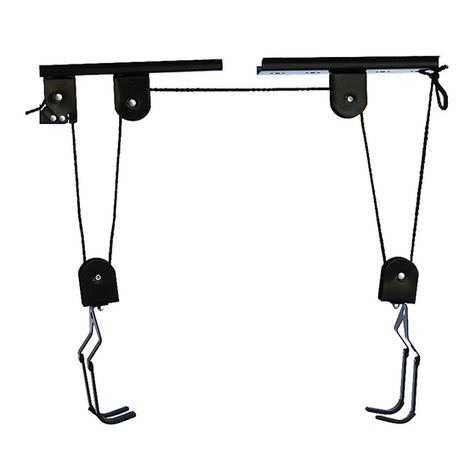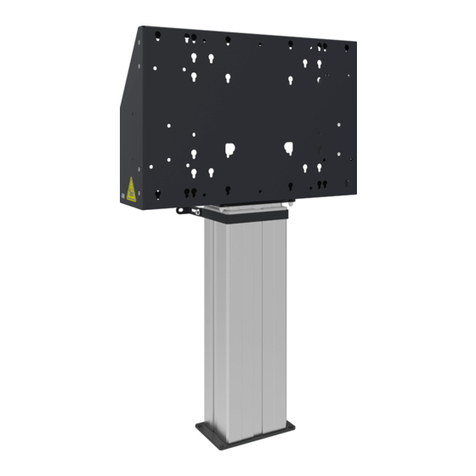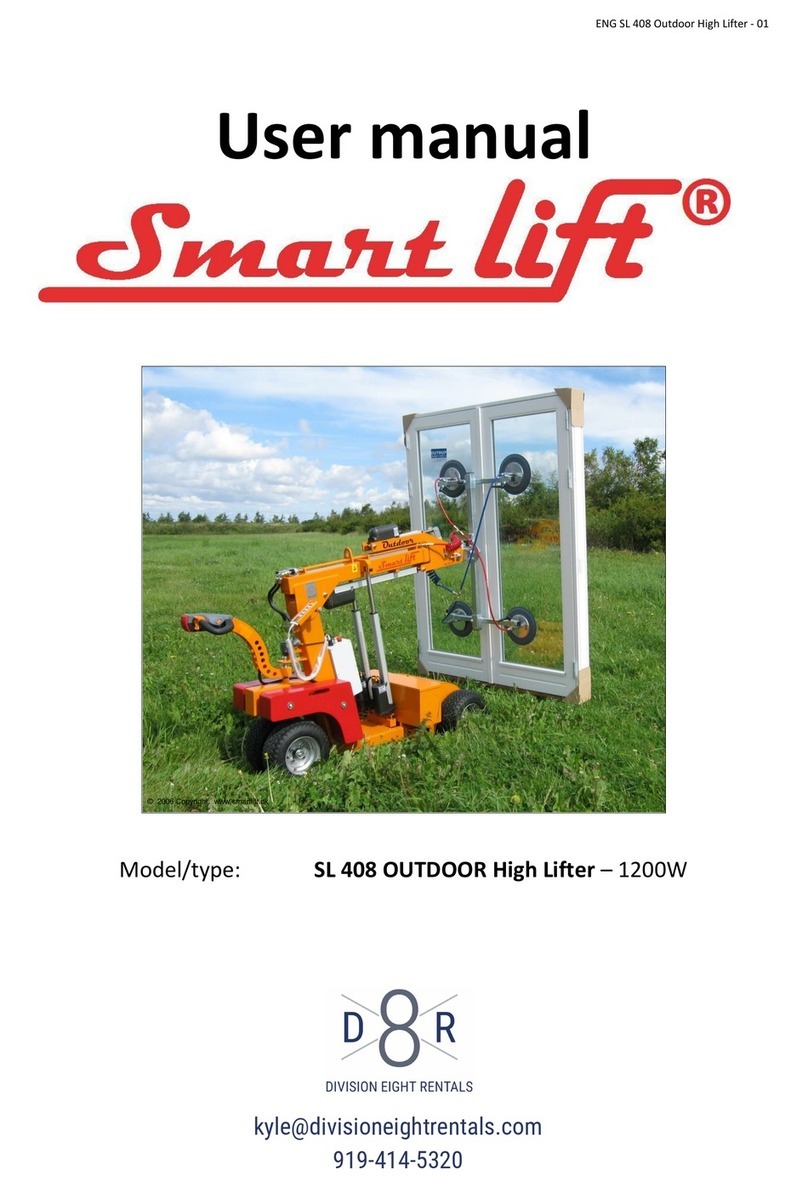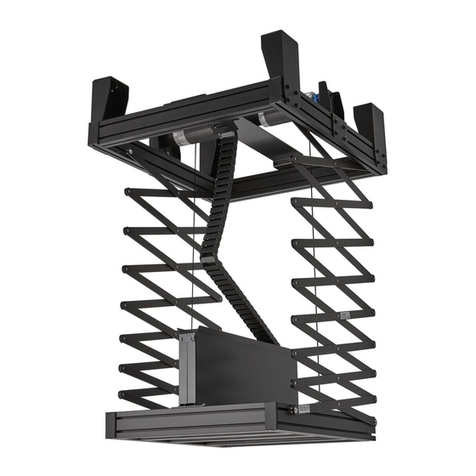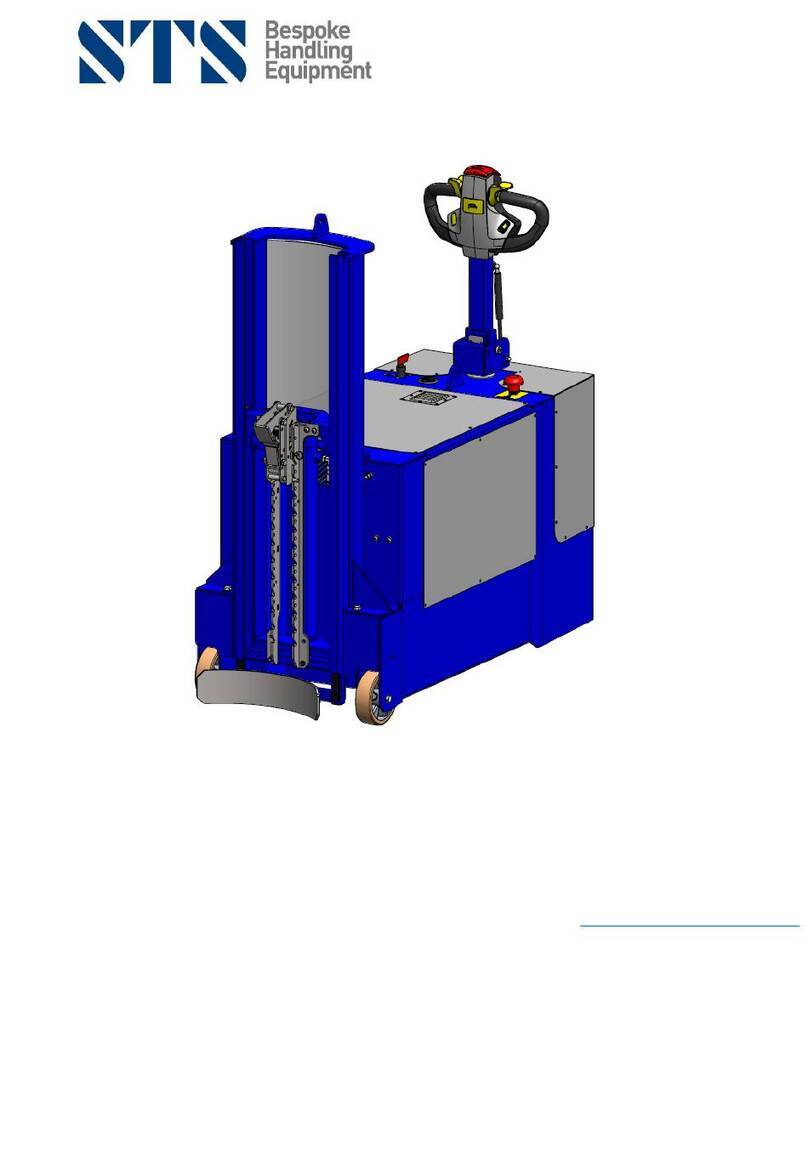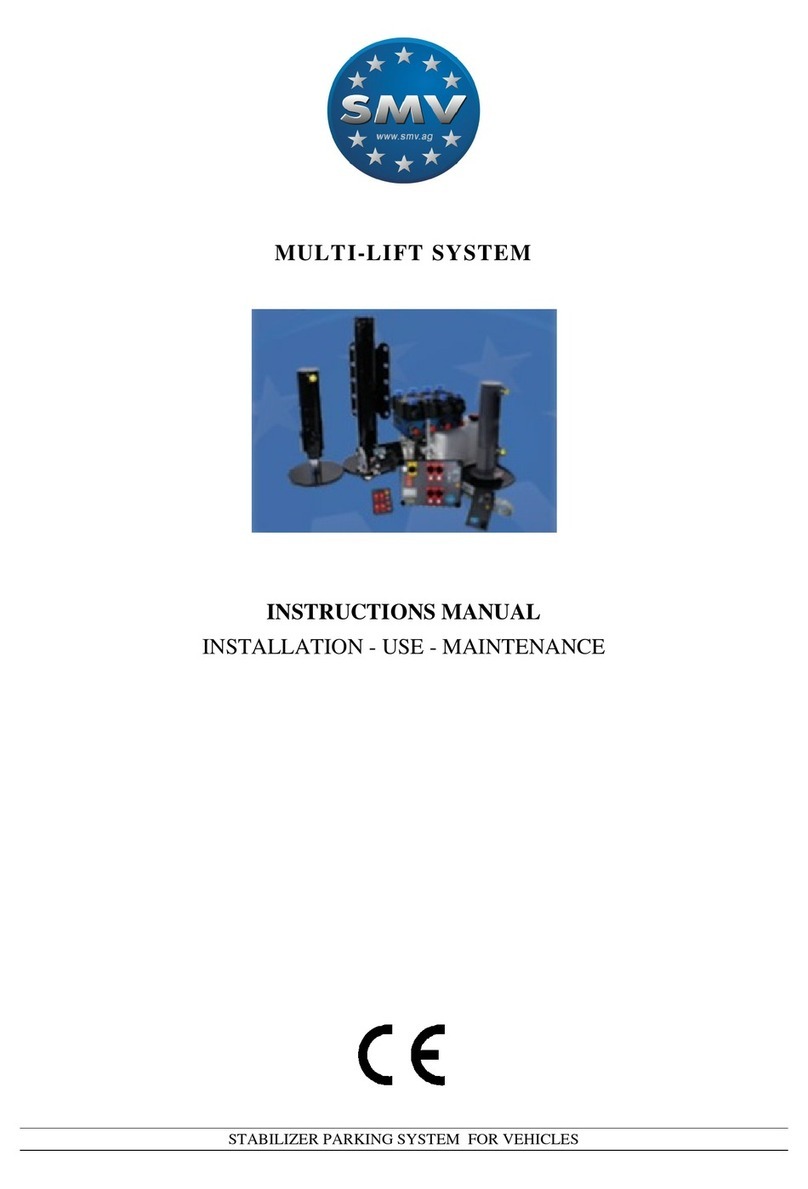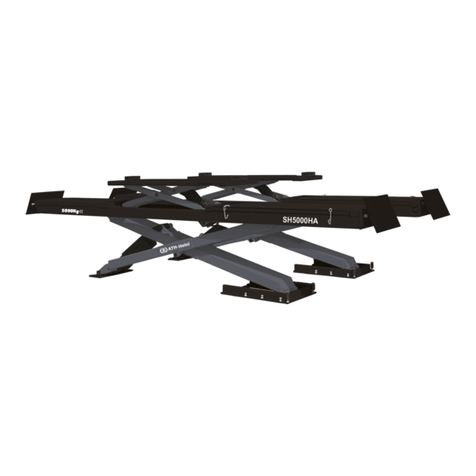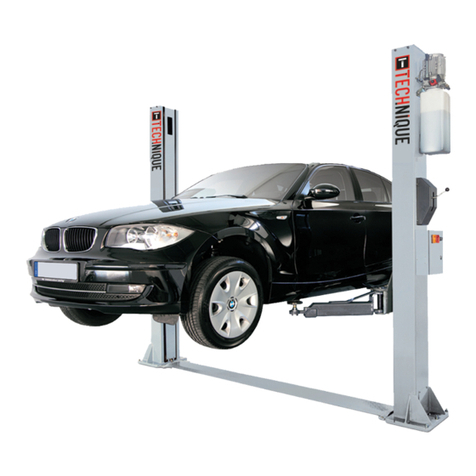Ifor Williams Trailers EasyLoad TA5 User manual

EasyLoad System 4
EasyLoadTM Rear ramp system with
FOR TA5, TA510 and DP120 MODELS
These instructions are provided to help you to get the best possible service from your
trailer.Toensurethatthetrailerisusedsafely,westronglyrecommendthattheinstruc-
tions are read by all users and all the recommendations followed. This also applies to
the main user handbook.
Misuse may invalidate warranty
IMPORTANT
If you sell your trailer, please pass on this booklet as well as the main user handbook
to the new owner
BRITAIN’S LEADING TRAILER
MANUFACTURER
FM 13224
FM13224
C95040 Issue 2 Jan 2007
OPERATING INSTRUCTIONS
EasyLiftTM Collapsible deck & rear barrier

EasyLoad System 1
INTRODUCTION TO THE EasyLoadTM and EasyLiftTM SYSTEMS
Unique to Ifor Williams the factory fitted EasyLoadTM ramp and EasyLiftTM barrier system
greatly simplifies the loading of the upper deck without the need to manhandle ramps or
livestock.
With the deck system folded away the trailer is suitable for use with cattle and other livestock.
In this configuration the EasyLoadTM ramp is used in the same manner as a conventional
loading ramp.
All deck and rear barrier components are stored on board the trailer and are conveniently
and safely stowed for quick and easy access. When required the deck system can be
deployed or stowed within a few minutes without the need for any tools or special equipment.
With the decks deployed the EasyLoadTM ramp can be operated, lifting easily into position,
assisted by way of two gas springs, requiring very little effort from the operator.
The EasyLiftTM rear barrier automatically tilts the last section of decking down, so that the
deck,barrier and ramp all fit together to form one single loading ramp with a reduced incline1.
Once loading is complete the mechanism of the EasyLiftTM rear barrier can be used to lift the
rear deck section back into place and then by utilising the weight of the operator the
EasyLoadTM inner ramp can be lowered and simply locked in place.
BEFORE LOADING / UNLOADING
Whenever loading and unloading, the trailer MUST be attached to the towing vehicle
The trailer should be positioned on firm and reasonably level ground, if the trailer is on soft
or uneven ground it may be necessary to provide additional support under the ramp feet
(which contact the ground when the ramp is opened) to keep them level or to prevent them
from sinking into the ground.
Before commencing any loading or unloading operations, the operator should be aware of
general health and safety issues, taking particular care to avoid any actions which may pose
a risk to passers by, or other road users.
OPENING THE OUTER RAMP
The ramp is held closed by two rotating handles, these in turn are
locked by spring loaded plungers to provide positive ramp
locking.
To release, depress the plunger and rotate the handle away from
the ramp. As it opens the handle crosses the path of the plunger
thus holding it in. Repeat this operation for the other side.
With both catches released, stand to one side and carefully lower
the ramp to the ground.
Users of trailers should still exercise caution and follow general
health and safety practices when operating any ramp or door, to
avoid injury to themselves, other people or animals present.
Ramp assistor springs fitted to the outer ramp and gas springs
fitted to the inner ramp should be checked on a regular basis, if
in doubt consult your local Ifor Williams Distributor.
1. As specified in (EC) No 1/2005 on the protection of animals during transport and related operations.
RAMP HANDLE

EasyLoad System 2
RAMP SIDE GATES
The ramp side gate assemblies should now both be opened.
Starting with the right hand gate, lift it upward (to disengage it
from the clip) and then swing it outwards and down to adjust
the gate to match the ramp angle.
The side gate locating peg should be inserted into the
corresponding slot on the outside edge of the ramp, the
second gate can now be opened and positioned in its slot.
It is a legal requirement that ramp side gates are used when loading livestock1, this applies
whether the ramp is being used to access the upper deck or the lower area of the trailer. In
addition to this the lower section of the ramp side gate is filled in to protect users, other
people and animals from the potential danger of being trapped in the ramp mechanism,
therefore it is essential that they are always used correctly.
If additional gate width is required to block a large gateway or opening, the optional ramp
gate extensions should be used.
BEFORE RAISING THE INNER RAMP
It is important to note that the ramp is raised by means of a pair of gas struts which provide
considerable force below the ramp platform. This force is counterbalanced by the operator
standing on the ramp, therefore the following procedure should NEVER be attempted unless
you are standing on the ramp as misuse could cause serious injury.
The inner ramp section should only be deployed with the lower trailer area empty, this is to
prevent livestock entrapment, therefore load the upper deck first and unload it last.
RAISING THE INNER RAMP
With the ramp in its lowered position, walk up the ramp
to a position where you can easily reach the opening
tab(s). Next lift the safety stop (1) and rotate the opening
tab (2) so that it clears the edge of the ramp platform (3).
Repeat this for the other side and then slowly walk back
down the ramp. As you step off the bottom of the ramp it
will spring up and lock in place.
As the ramp springs up, the release plate (6) will drop
and allow the stay guide (5) to rotate and move into a
notch, thus providing support for the inner ramp.
ALWAYS check the locking action before walking up
the ramp, and commencing loading / unloading.
Practice this action before loading animals to familiarise
yourself with the routine and to ensure that you know
when the raised ramp is safely locked in position.
1. (EC) No 1/2005 on the protection of animals during transport and related operations. Ch3 1.4b
RAMP SIDE GATE
1
2
3
4
65
INNER RAMP CONTROLS

EasyLoad System 3
B
C
A
Whilst every care is taken to ensure that the information in this manual is correct, no liability can be
accepted for any loss, damage or injury caused by any errors in, or omissions from, the information given.
Ifor Williams Trailers Ltd., Cynwyd, Corwen, Denbighshire, LL21 0LB, UK
THE REAR BARRIER
This has three functions: Firstly it acts as a bridge (B)
between the inner ramp (C) and the rear deck section
(A) when loading, secondly it acts as a lever to the
mechanism which tilts the rear deck section and
thirdly it is a barrier to prevent the livestock on the
upper deck escaping.
OPENING THE REAR BARRIER
Operate the spring bolts located on each side of the
barrier, by pulling back on the pin and rotating, so that
the bolts lock open. Pull the barrier towards you to
open it and tilt the rear deck section, allow the barrier
to come to rest on the raised inner ramp.
If the trailer is being unloaded you should be aware that the barrier may open rapidly once
released. Any livestock within will attempt to exit the trailer as soon as the barrier is released,
and you should be prepared for this eventuality.
CLOSING THE REAR BARRIER
This is simply the reverse of opening, however it is important to note that as the barrier will
now lift the rear deck section as well as any animals that are likely to be standing on it, some
resistance will be felt. Do not release the barrier until you have it in the closed position and
the springbolts have been sprung back (by rotating the pin to release them). Ensure the rear
barrier is secure by checking the springbolts have located into the grooves.
CLOSING THE INNER RAMP
With the rear barrier closed and ensuring there is no weight
on the ramp, rotate the operating rod via the handle (5) to
disengage the ramp locking mechanism (6). This only needs
to be done from one side.
Walk up the ramp until it falls back (against the gas strut
pressure) into the lower position.
Rotate the opening Tabs (2) back into position over the edge
of the ramp platform (3) until they contact the back stop (4)
Next drop the safety stops (1) into position to complete the
inner ramp closing sequence.
CLOSING THE RAMP SIDE GATES AND OUTER RAMP
The left hand side gate should be closed first, locating the peg in the receptacle provided in
the floor. Close the right hand gate next, locating it over the bracket fitted to the left hand
gate. On some models there is also a receptacle in the floor to receive this gate. The outer
ramp can now be lifted, and the ramp handles rotated and pushed back so that the tongue
of the handle locates in the receiver on the trailer body. When the handle reaches its closed
position the plunger will spring out to lock it in place.
1
2
3
4
INNER RAMP CONTROLS
65
Note: side gates omitted from
Illustration for clarity
This manual suits for next models
2
Table of contents
Popular Lifting System manuals by other brands
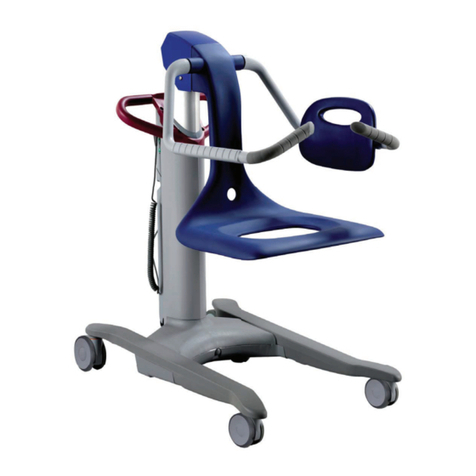
ARJO HUNTLEIGH
ARJO HUNTLEIGH Alenti Instructions for use
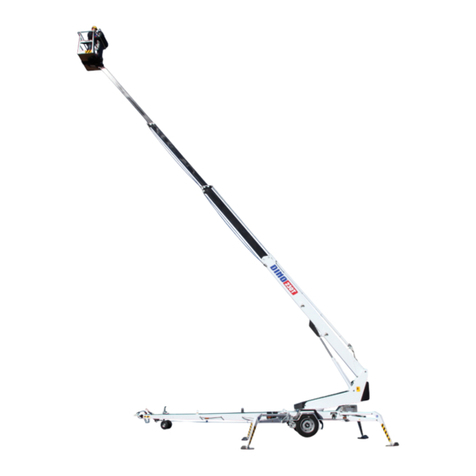
Dino lift
Dino lift 230T operating instructions
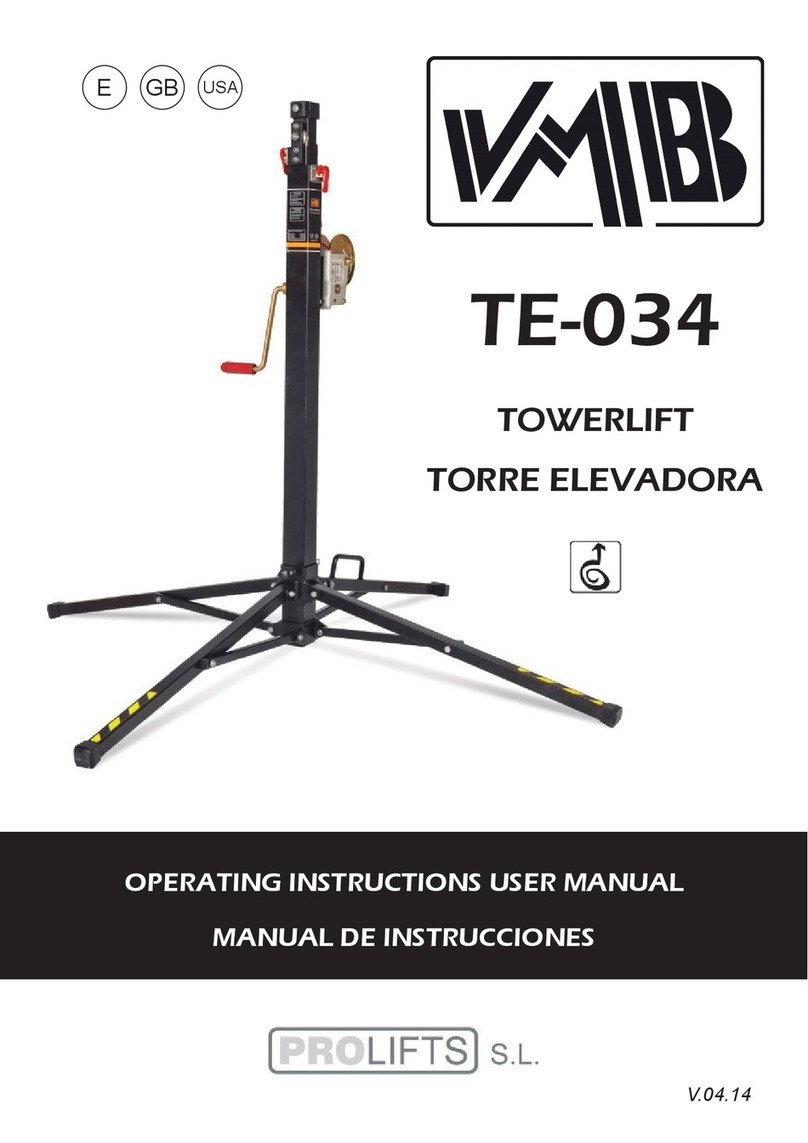
PRO LIFTS
PRO LIFTS VMB TE-034 Operating instructions & user manual

Wesco
Wesco 272460 instruction manual
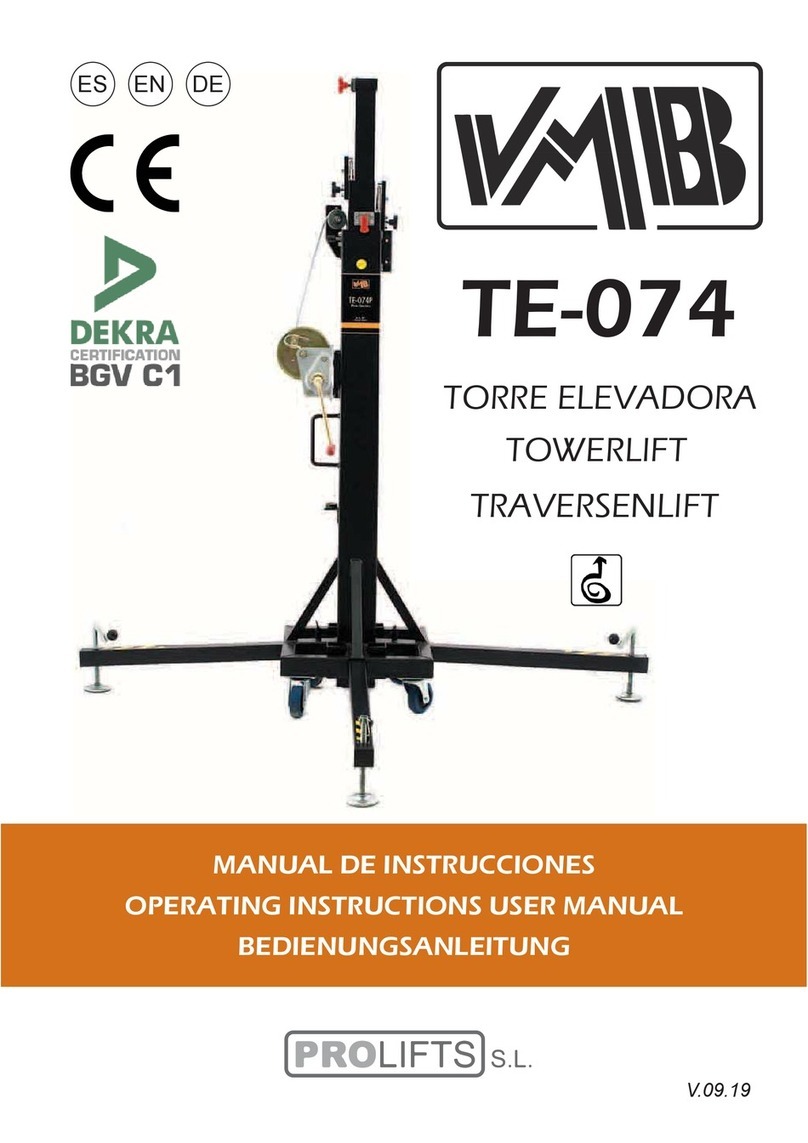
PRO LIFTS
PRO LIFTS VMB TE-074 Operating instructions & user manual

Dino lift
Dino lift DINO 105T operating instructions

